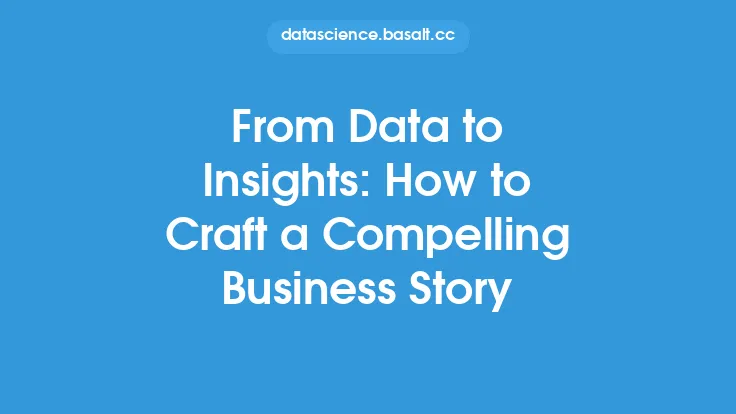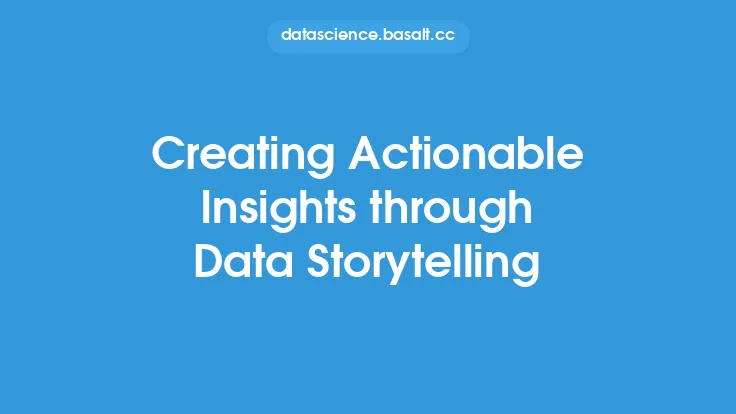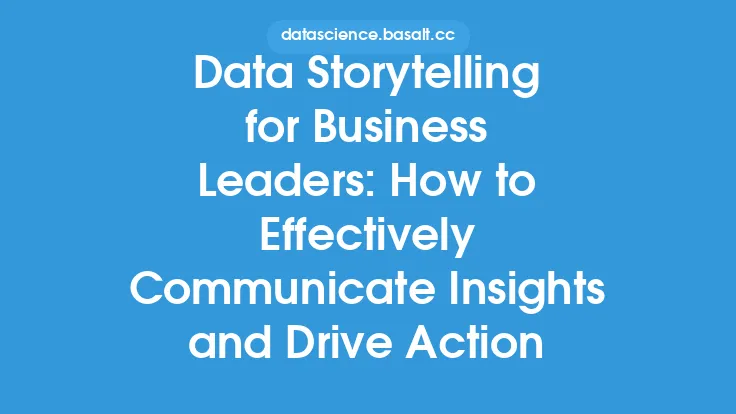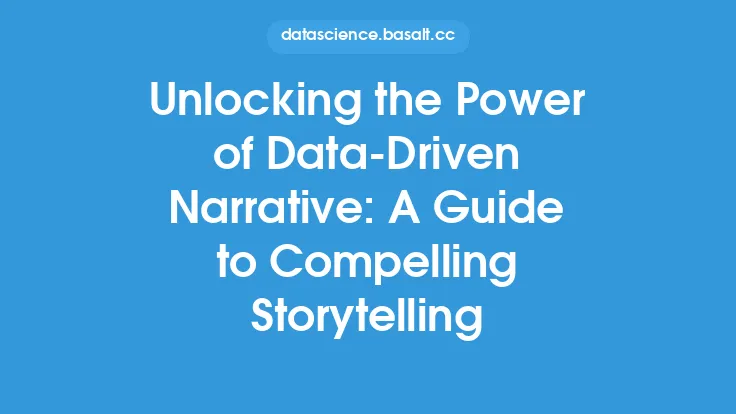In today's fast-paced business landscape, organizations are constantly seeking ways to extract valuable insights from their data and communicate them effectively to stakeholders. One approach that has gained significant attention in recent years is the use of compelling storytelling to unlock business insights. By leveraging the power of narrative, businesses can transform complex data into engaging, easy-to-understand stories that drive decision-making and action.
Introduction to Storytelling for Business Intelligence
Storytelling for business intelligence involves using data to tell a story that reveals insights, trends, and patterns. This approach combines data analysis, visualization, and narrative techniques to create a compelling narrative that communicates key findings and recommendations. By using storytelling techniques, businesses can make their data more relatable, memorable, and actionable, ultimately leading to better decision-making and improved outcomes.
The Science of Storytelling
Research has shown that the human brain is wired to respond to stories, with studies indicating that stories can increase engagement, empathy, and recall. When it comes to business intelligence, storytelling can help to overcome the limitations of traditional data presentation methods, such as tables, charts, and graphs. By using narrative techniques, businesses can create a emotional connection with their audience, making the data more accessible and meaningful. This is particularly important in today's data-driven world, where the sheer volume and complexity of data can be overwhelming.
Crafting a Compelling Narrative
To craft a compelling narrative, businesses need to identify the key elements of a story, including the setting, characters, plot, and resolution. In the context of business intelligence, the setting might be the market or industry, the characters might be customers or competitors, the plot might be a trend or pattern, and the resolution might be a recommendation or insight. By using these narrative elements, businesses can create a story that is both informative and engaging, with a clear beginning, middle, and end.
Data Visualization and Storytelling
Data visualization plays a critical role in storytelling for business intelligence, as it provides a way to communicate complex data insights in a clear and concise manner. By using visualization tools, such as charts, graphs, and heat maps, businesses can create interactive and dynamic stories that allow users to explore the data in more detail. This can be particularly effective when combined with narrative techniques, such as annotation and commentary, which can provide additional context and insight.
Technical Considerations
From a technical perspective, storytelling for business intelligence requires a range of skills and tools, including data analysis, data visualization, and narrative techniques. Businesses may need to invest in specialized software, such as data visualization tools or business intelligence platforms, to support their storytelling efforts. Additionally, they may need to develop the skills of their analysts and data scientists to include narrative techniques and storytelling principles.
Best Practices for Storytelling in Business Intelligence
To get the most out of storytelling in business intelligence, businesses should follow a number of best practices, including:
- Keeping the story simple and focused on the key insights and findings
- Using clear and concise language, avoiding technical jargon and complexity
- Incorporating visual elements, such as charts and graphs, to support the narrative
- Providing context and background information to help users understand the story
- Using interactive and dynamic visualization tools to allow users to explore the data in more detail
- Testing and refining the story with different audiences and stakeholders to ensure it is effective and engaging.
Real-World Applications
Storytelling for business intelligence has a wide range of real-world applications, from sales and marketing to finance and operations. For example, a company might use storytelling to communicate the results of a customer survey, highlighting key trends and insights that can inform product development and marketing strategy. Alternatively, a business might use storytelling to present financial results, using narrative techniques to explain complex financial data and provide context for investors and stakeholders.
Conclusion
In conclusion, compelling storytelling is a powerful tool for unlocking business insights and communicating complex data in a clear and concise manner. By leveraging the power of narrative, businesses can transform their data into engaging, easy-to-understand stories that drive decision-making and action. Whether it's through data visualization, technical skills, or best practices, storytelling for business intelligence has the potential to revolutionize the way organizations approach data analysis and communication, leading to better outcomes and improved success.





